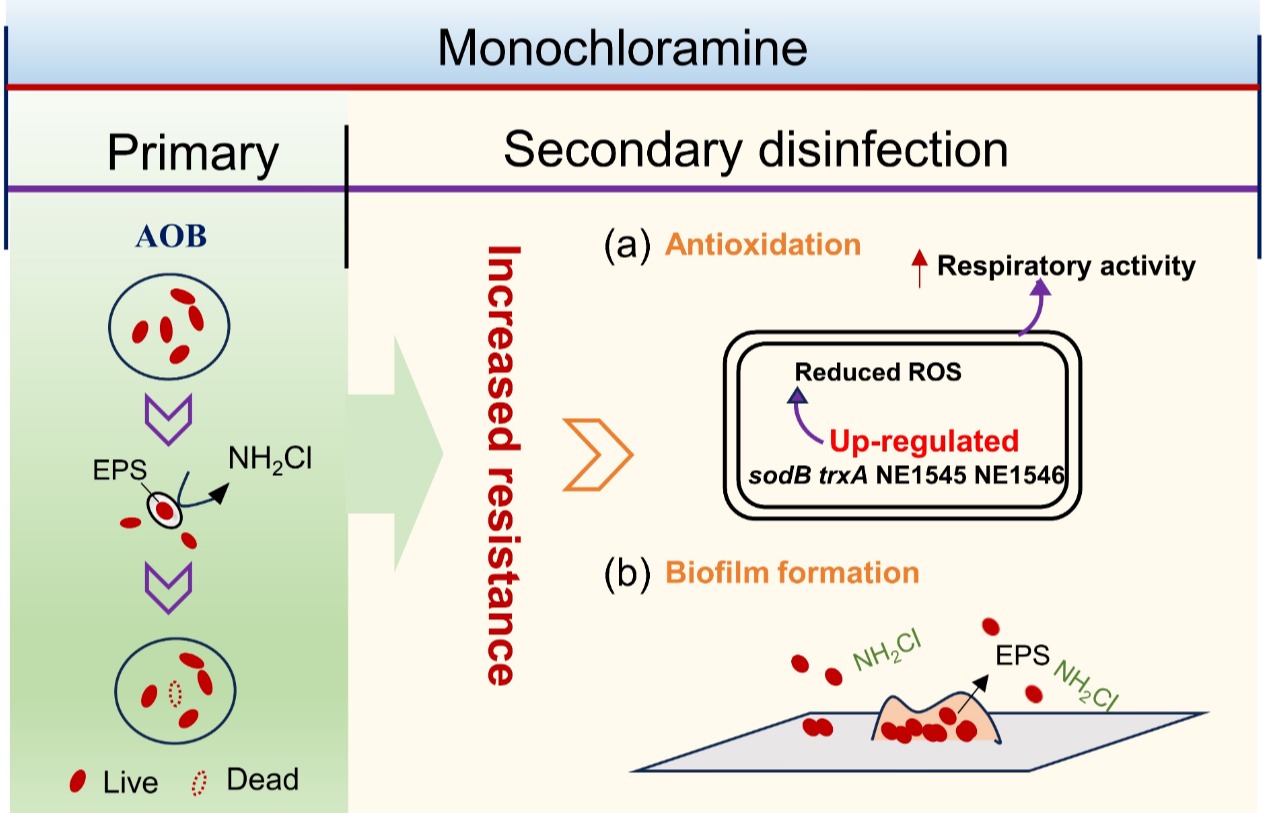Shikan Zheng, Jianguo Li, Wanli Yan, Wenya Zhao, Chengsong Ye*, Xin Yu*
Water Research
https://doi.org/10.1016/j.watres.2024.121432
Published: 1 May 2024
Abstract
Chloramination is an effective strategy for eliminating pathogens from drinking water and repressing their regrowth in water distribution systems. However, the inevitable release of NH4+ potentially promotes nitrification and associated ammonia-oxidizing bacteria (AOB) contamination. In this study, AOB (Nitrosomona eutropha) were isolated from environmental water and treated with two disinfection stages (chloramine disinfection and chloramine residues) to investigate the occurrence mechanisms of AOB in chloramination. The results showed that N. eutropha had considerable resistance to monochloramine compared to Escherichia coli, whose inactivation rate constant was 19.4-fold lower. The higher resistance was attributed to high levels of extracellular polymer substances (EPS) in AOB, which contribute to AOB surviving disinfection and entering the distribution system. In AOB response to the chloramine residues stage, the respiratory activity of N. eutropha remained at a high level after three days of continuous exposure to high chloramine residue concentrations (0.5–1.5 mg/L). Reverse transcription-quantitative polymerase chain reaction (RT-qPCR) suggested that the mechanism of N. eutropha tolerance involved a significantly high expression of the intracellular oxidative stress-regulating (sodB, txrA) and protein-related (NE1545, NE1546) genes. Additionally, this process enhanced EPS secretion and promoted biofilm formation. Adhesion predictions based on the XDLVO theory corroborated the trend of biofilm formation. Overall, the naturally higher resistance contributed to the survival of AOB in primary disinfection; the enhanced antioxidant response of surviving N. eutropha accompanied by biofilm formation was responsible for their increased resistance to the residual.
